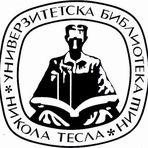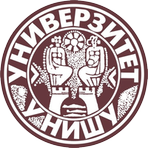Title
Uticaj protokola stimulacije kod policističnog ovarijalnog sindroma na ishod vantelesnog oplođenja
Creator
Trenkić, Milan S. 1979-
Copyright date
2016
Object Links
Select license
Autorstvo-Nekomercijalno-Bez prerade 3.0 Srbija (CC BY-NC-ND 3.0)
License description
Dozvoljavate samo preuzimanje i distribuciju dela, ako/dok se pravilno naznačava ime autora, bez ikakvih promena dela i bez prava komercijalnog korišćenja dela. Ova licenca je najstroža CC licenca. Osnovni opis Licence: http://creativecommons.org/licenses/by-nc-nd/3.0/rs/deed.sr_LATN. Sadržaj ugovora u celini: http://creativecommons.org/licenses/by-nc-nd/3.0/rs/legalcode.sr-Latn
Language
Serbian
Cobiss-ID
Theses Type
Doktorska disertacija
description
Datum odbrane: 14.09.2016.
Other responsibilities
mentor
Popović, Jasmina
predsednik komisije
Živadinović, Radomir
član komisije
Kopitović, Vesna
član komisije
Bjelica, Artur
član komisije
Stefanović, Milan
Academic Expertise
Medicinske nauke
University
Univerzitet u Nišu
Faculty
Medicinski fakultet
Group
Katedra za ginekologiju sa akušerstvom
Alternative title
The effect of stimulation protocol in polycystic ovarian syndrome on the outcome of in vitro fertilization
Publisher
[M. S. Trenkić]
Format
135 listova
description
Beleška o autoru: list 135
description
Gynecology and obstetrics
Abstract (en)
Polycystic ovarian syndrome (PCOS) is considered one of the
most common endocrine disorders of women of reproductive age. It is
characterized by chronic anovulation, signs of hyperandrogenism,
polycystic appearance of ovaries and subfertility or sterility. Although
polycystic ovaries are a common finding in infertile women, the exact
incidence of these patients included in the in vitro fertilization
program is not known.
The aim of this study was to assess the effect of PCOS on the course
and the outcome of in vitro fertilization; compare the characteristics of
ovarian response and compare the clinical pregnancy and miscarriage
rates in women with PCOS to those in women with tubal factor sterility;
examine which ovarian stimulation protocol in patients with PCOS has a
higher success rate and a lower risk of the occurrence of Ovarian
Hyperstimulation Syndrome (OHSS); examine the effect of age, body
mass index, levels of Anti-Mullerian hormone and the use of metformin
on in vitro fertilization (IVF) outcomes in patients with PCOS.
The research was conducted as a prospective comparative study.
The study included 123 patients with PCOS and 94 patients
participating IVF program due to tubal sterility. The patients were
treated by a long GnRH agonist protocol, a short GnRH agonist
protocol or a flexible GnRH antagonist protocol.
The patients with PCOS have a higher number of the oocytes
retrieved and a lower fertilization rate. Clinical pregnancy and
miscarriage rates did not differ significantly between the two groups,
while OHSS was present only in the group of patients with PCOS. The
length of stimulation of patients with PCOS was shorter in the antagonist
group, whereas the total number of aspirated oocytes was statistically
significantly higher in the agonist group. Significantly higher number of
the obtained embryos as well as a higher number of best quality embryos
in the agonist group did not affect the clinical pregnancy rate.
We have concluded that patients with PCOS achieve clinical
pregnancy rates similar to those of women with tubal factor infertility.
The antagonist protocol has clinical pregnancy rate comparable to that
of the agonist protocol. Although there is no statistically significant
difference in the incidence of OHSS, a less frequent occurrence of
this serious complication has been noticed in the antagonist protocol.
Authors Key words
Policistični ovarijalni sindrom, GnRH agonisti, GnRH antagonisti,
vantelesno oploĎenje, kvalitet embriona
Authors Key words
Polycystic ovary syndrome, GnRH agonists, GnRH antagonists, in
vitro fertilization, embryo quality
Classification
615.256.5:618.177-089.888.11(043.3)
Subject
B 570
Type
Elektronska teza
Abstract (en)
Polycystic ovarian syndrome (PCOS) is considered one of the
most common endocrine disorders of women of reproductive age. It is
characterized by chronic anovulation, signs of hyperandrogenism,
polycystic appearance of ovaries and subfertility or sterility. Although
polycystic ovaries are a common finding in infertile women, the exact
incidence of these patients included in the in vitro fertilization
program is not known.
The aim of this study was to assess the effect of PCOS on the course
and the outcome of in vitro fertilization; compare the characteristics of
ovarian response and compare the clinical pregnancy and miscarriage
rates in women with PCOS to those in women with tubal factor sterility;
examine which ovarian stimulation protocol in patients with PCOS has a
higher success rate and a lower risk of the occurrence of Ovarian
Hyperstimulation Syndrome (OHSS); examine the effect of age, body
mass index, levels of Anti-Mullerian hormone and the use of metformin
on in vitro fertilization (IVF) outcomes in patients with PCOS.
The research was conducted as a prospective comparative study.
The study included 123 patients with PCOS and 94 patients
participating IVF program due to tubal sterility. The patients were
treated by a long GnRH agonist protocol, a short GnRH agonist
protocol or a flexible GnRH antagonist protocol.
The patients with PCOS have a higher number of the oocytes
retrieved and a lower fertilization rate. Clinical pregnancy and
miscarriage rates did not differ significantly between the two groups,
while OHSS was present only in the group of patients with PCOS. The
length of stimulation of patients with PCOS was shorter in the antagonist
group, whereas the total number of aspirated oocytes was statistically
significantly higher in the agonist group. Significantly higher number of
the obtained embryos as well as a higher number of best quality embryos
in the agonist group did not affect the clinical pregnancy rate.
We have concluded that patients with PCOS achieve clinical
pregnancy rates similar to those of women with tubal factor infertility.
The antagonist protocol has clinical pregnancy rate comparable to that
of the agonist protocol. Although there is no statistically significant
difference in the incidence of OHSS, a less frequent occurrence of
this serious complication has been noticed in the antagonist protocol.
“Data exchange” service offers individual users metadata transfer in several different formats. Citation formats are offered for transfers in texts as for the transfer into internet pages. Citation formats include permanent links that guarantee access to cited sources. For use are commonly structured metadata schemes : Dublin Core xml and ETUB-MS xml, local adaptation of international ETD-MS scheme intended for use in academic documents.


